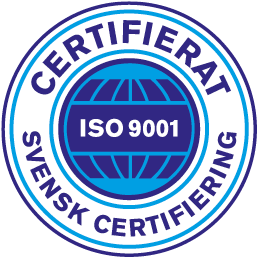S&OP MasterClass™
How to Map your Supply Chain Sustainability Scope with Data
Welcome to this S&OP MasterClass.
These MasterClasses have the purpose of diving into Integrated Business Planning and Supply Chain Planning in general, hopefully giving you some good inputs on the way.
894048489
Sustainability is the new buzzword in the supply chain planning world. The million-dollar question is - How do you get the data for the three emission scopes?
The above question is the topic of this podcast, where we look at ways to map data across sustainability scopes 1 and 2 and the complex scope 3. We're looking at a top-down approach, a bottom-up one, and, naturally, what you can gain from your ERP system's emission data.
Benjamin Obling will walk you through the complexities with his extensive experience in S&OP and Integrated Business Planning.
Your host is Søren Hammer Pedersen
This podcast is produced by Montanus.
In This Episode
Listed below are the most essential timestamps from the podcast episode to make it easier for you to find the topics that interest you.
00:55 Definition of scopes 1, 2, and 3
03:15 The state of sustainability in supply chains in companies
04:45 Making sustainability targets operational in supply chain planning
07:18 How to handle scopes 1, 2, and 3
13:23 Data sources for emission scopes
17:36 Summing up opportunities and pitfalls.
Full Episode Transcription
Søren Hammer Pedersen (00:08):
Hello, everybody. Warm welcome to this S&OP Masterclass from Perito Consulting. We are running a series of masterclasses on sustainability and supply chain planning. In our previous podcast, we discussed the train of sustainability that we think is going to hit supply chain planning soon and today we are diving more into the operational part of many of the things that we just discussed in the previous podcast. So if you’re interested in learning about why we think this train is coming and why you should get on it, please go back and check our latest podcast. But on today’s topic, and today, again, I brought my very good colleague, Benjamin. Welcome to the studio, Benjamin.
Benjamin Obling (00:54):
Thank you.
Søren Hammer Pedersen (00:55):
And we are diving into one of the very interesting points we had in the last podcast, because we were talking about how to do this in practice. One thing is that we know the train is coming, that’s a good thing, but what do we do in practice? And we talked about the need for deep transparency as we call it, calculating the scope one, two and three. And that’s actually what we’re diving today into today. I think many of our listeners are quite interested in how would you do this in a data driven way. So let’s just kick into that. But maybe first, when we say scope one, two and three, could you just elaborate a bit on what do we mean by that?
Benjamin Obling (01:42):
Yeah, so the definitions of the scope one, two, three, is scope one is the direct emissions we have. So first of all, we are talking the CO2 emissions or CO2 emission equivalence. So that means it can be different greenhouse gases, but we turn it into CO2 equivalence. So scope one are the direct, so that would be the gas, the fuel, the diesel that you use in the company for transportation, for company cars, et cetera, for the gas in production, et cetera. So more easy to measure because you can measure how much diesel did you use and then you can turn that into CO2 equivalence using conversion rates.
(02:23):
Then you have the scope two, so that is the indirect but still somewhat direct. You could say that’s the power, electricity, steam, for example. So again, fairly easy to measure. You can measure how much power did you use and then you can convert that with the conversion rates based on whereas your power supplied from and what is the general CO2 emissions you have per kilowatt hour, for example. And then you have scope three, the last one, the trigger one is the indirect other. That’s basically the rest. So that would be everything you purchase. So that could be all from transportation that you purchase. So flight, freight cars, for example. But also goods. It could be iron, steel components, cars that you lease, the company business travel, et cetera. So all the rest, the tricky part of it.
Søren Hammer Pedersen (03:15):
Okay. And when we see there’s a need for, I think, one of the point we made in the last podcast was that there were need for this deep transparency and a very data-driven approach to this. Why actually do we see that need now? What is the state of this? I think many companies have worked with these scopes for sometimes now, but we are not quite there yet. Or how do you see this?
Benjamin Obling (03:38):
No, you see, what we normally see is the companies are somewhat on the way or are there on in terms of scope one and two. So the more easy ones to measure. They might have it in a bit too aggregated format. So for example, you have the total power that you use for a certain plant, for example, or maybe in the total company and then you turn that into a CO2 equivalence. But you could say what that doesn’t provide of inside is how do we use that, what is it used for? So the power that we use, what is it used for? So which production processes, which products is it going into and which customers is it then eventually hitting?
(04:18):
So if we’re just doing it on this broad aggregated scale saying, “Okay, how much power do we use in total?” And then we convert it into CO2 and then we have a report and that’s it. Perfect. Then we can’t say when the customer comes and say, “I would like to know the products that I’m purchasing, how much CO2 is that generating?” We wouldn’t have an answer for that, because we don’t know how the emissions are used, what they’re used for in the production. And that’s the transparency we need to get to.
Søren Hammer Pedersen (04:45):
Yeah. And I guess from a supply chain planning perspective here, if we just stay on this aggregated level really high and they will get some targets, something at some point they need to achieve, but they won’t have the transparency to actually make it operational. I guess that’s the core issue for supply chain planning when it comes to these scopes as well.
Benjamin Obling (05:10):
Yeah, absolutely. That you need to be in order to, one is to measure it, okay, now we know in total, but the next is how do we then simulate what can we do about it? And in order to simulate, you need to have more detailed information. And ideally you would have that transparency all the way down to, first of all, which scopes is it coming from? So what is the source of the emission? So is that external transportation, is it gas we’re using and so on, what are we using it for? So which activities is it being used for all the way down to production processes? So ideally down, so this is work center 15 in plant X and it’s producing this product for example.
(05:49):
If you have it all the way down to that detail level, then you know when you look at the product you could turn it around and then say, “Okay, this product, what is that resulting of CO2 emissions?” And then you can start to look at different angles of simulating the impact. So one could be, “Look at the process. Can we reduce the process? Can we remove the process? How much CO2 will be removed if we do that? What if we remove the product? What if we use a different product which has a lower emission through our supply chain?” For example. Then we can start to make it operational and make the initiatives to reduce it.
Søren Hammer Pedersen (06:24):
So actually I think that’s a hugely important point here, because then we have obligation as supply chain at the moment because if we don’t push back on these very aggregated initiatives that are going on in companies now, it will be our problem in the end because we’ll be missing the moving parts that we need to make it work afterward.
Benjamin Obling (06:46):
Yeah, you could start with a very simple, of course, that’s what many companies are doing. Start with the simple approaches on saying, “Okay, let’s take all the company cars that are now diesel driven and turn it into electrical cars.” But once you have done that, and that’s obviously a good thing to do and it will reduce your CO2 emissions and so on. But you could say the next thing is, “Okay, first of all, that’s a very small percentage of your total CO2 emissions, most likely, because the large part will be in the supply chain and there you’ll need to be able to open the box and start to slice and dice and analyze where we actually using the emissions.”
Søren Hammer Pedersen (07:18):
Yeah, okay. I think that’s very good. And I think what, of course, many of our listeners are thinking about here is, “Okay, you say deep transparency, you say data driven,” but how?
Benjamin Obling (07:29):
Yes.
Søren Hammer Pedersen (07:31):
So maybe dive into that maybe on the one and two and then the three at the end. But could you give your perspective of how would you do this in a data driven way if you were to get these kind of calculations in place?
Benjamin Obling (07:45):
Yeah. So if we start with the scope one, so the direct here is, here you need the source, of course, of how much power are you using, if we take powers and as an example. So what is the power that you use? Get that at the most detailed level as you can because data is really the difficult part. I’ve completely agree on that. That’s what is stopping many companies. Because they’re getting the most detailed data that you can down to a certain level. So that could be, for example, what is it per plant or even machine if you have that detailed information and then you can turn it into the CO2 equivalence using different standard databases. So there are different conversion rates and you can use different databases. You need to bear in mind which ones are approved for, you could say reporting conversion, reporting and so on. So that’s one part.
(08:31):
But fairly easy, you have certain number of kilowatt hours, for example, that you spend on a certain plant. The supply is coming from this or this country or this part of the country. We have the general CO2 emission is X per kilowatt hour. But then, the next is, it’s not enough just to know it in the plant level, for example, we need to know which product is it being used for. If we are going to make a small bit like a P&L, a profit and loss on the product, but just a sustainability P&L. So being able to at the end, saying, a customer is coming saying, “Okay, I would like to know this product compared to this product. How does the CO2 emission look?” And then if you are to be able to say exactly, “Okay, we have these activities and what is that driving of emissions?”
(09:15):
And at the end of the day which of the two products and then the more sustainable product, then you have the more sustainable product, you can hopefully put a higher price tag on that one or you can move the customer towards that, reducing the CO2 emissions. Actually without doing any changes in what you do now, just change, say change your product mix. So that’s one way of doing that.
Søren Hammer Pedersen (09:41):
And of course, it sounds maybe wrong, this is the easy part because you have your own hands on these. So the data sources here are fairly accessible for each kind, of course. They maybe need to go into more details, but fairly easy task or…
Benjamin Obling (09:58):
Yeah, you say the easy task would be that you know, you could say, the approach is that you take it as detailed as you can, but you can do it more general. So say the only information we have is how much money did you spend on power across the company? That’s the only information we have. Okay. Then we’ll start there, then we can dive deeper into that and making splits, et cetera. So to split it out under different places where you use the electricity, if you have more detailed information, you should use that part.
Søren Hammer Pedersen (10:30):
And still the recommendation is that if you have the total energy cost for instance, you still need to break it down. So yeah, please don’t stop there. Even though it would be nice. Easy, for sure. Yeah.
Benjamin Obling (10:44):
No, no, no. Like I say, the method and which is the same method we would are using in the scope three. Because there you have the different problem, we don’t know exactly how much power that we have been using if we purchase a product or if we purchase transportation, for example. So here we might be able to get some information from the suppliers, but in most company, the suppliers of the product that we purchase, that can be transportation, it could be steel components, whatever. In most cases, we won’t be able to get that information and it will be having 2000 suppliers with the, let’s say, 60,000 components going into the company. That’s not realistic to make that mapping and get that information maybe somewhere down the line when all the companies have mapped all of this, that CO2 with deeper transparency that would be possible.
(11:31):
But for now, then saying, “Okay, what we use, again, going as detailed as we can.” But for example, saying, if we have transportation, I’m not saying we are moving X number of goods from China to Europe, for example. And the mode of transportation is sea, it’s air or that would be the main ones for that route. And then saying then we have standard emissions for that route. So we know on average what is the CO2 emission per tonnage, per, you could say, square meter for moving an X number of kilometers with a plane, for example. And from the ERP system, we would know where the goods coming from. So what is the means of transportation and where are the goods coming from, where they move to, and we know that all the way down to product level. So we know which products we’ve been moving from the ERP system in the company. So that’s data that we already have and we know when it’s being moved.
(12:32):
We also sometimes know how much space it takes up or how much many kilo it weights. That can be a master data problem, then you’ll need to apply some assumptions on that. But when you know that you can apply the average emission rates on that route, but still being very detailed actually, because you could say, whether you use one airline or the other, it won’t impact the CO2 emissions on the flight very much. If you have that information and you actually purchased a say more green product from that could be slow steaming, if we’re talking sea, then you can apply that at the more detailed level so that you apply the average rates and then you can start to go more detailed. But by doing that, you’re actually able to arrive at something without knowing all the details because we are using averages and approximations.
Søren Hammer Pedersen (13:23):
Yeah. But I think that would leave us, of course, with a picture of scope three, and you think you’ve mentioned both. In your experience, where would you get these data from? What are the different sources of data and that we could use to make some of these more detailed calculations?
Benjamin Obling (13:47):
Yeah, I say two main sources. One is the internal, that would be the ERP systems, for example, as the main source. Because that will tell us everything about where’s the product coming from, where is it going to, what is the mean of transportation, for example, but also what is it comprised of? So which component goes into that maybe what is that made of? So how much is steel, how much is et cetera, and you can then assess the emissions based on that. So a lot of the data is already there, on the ERP system, but it’s not linked to the CO2 emissions, obviously. We don’t have CO2 emissions at all in the ERP systems, for 99 point something percent of the companies. But what we’ll do then is external databases. So standard on emission databases saying, “Okay, what are different activities, different thing, what are they emitting, doing of emissions per unit?”
(14:37):
And one unit could be like kilometer flown with air or it could be what does it take to move one kilo, one meter by sea, et cetera. Or how much is CO2 emission does one kilo of steel emit. And then when how much steel is going in through your products, you know that from the bill of material, so the internal database and then you can link it to the external database, multiply it. And if you multiply it based on the very detailed information, so you use the bill of material, then we know what finished good is that going into? Now we know how much CO2 emission is going into different finished products. We also know which customers are actually using those finished products. So that means now we have the link all the way from the customer and the product all the way down to the CO2 emission based on the external databases and the internal piece of information.
Søren Hammer Pedersen (15:28):
So no matter how we go about this, it’s quite a big task and quite a big project to do this, and not to complicate things even more, but I will anyway, is of course, because one huge pitfall, I guess, here is that you’re doing this exercise with all the data, you’re really getting this picture, but you are not linking it to your operating model and your supply chain planning needs afterwards. Because I guess that’s going to have a huge impact on what kind of data, what kind of information do we need here, how we take that into account as well when we do this?
Benjamin Obling (16:05):
Yeah, absolutely. And that’s where we need the deep transparency again. You can say because when we do changes to lower that CO2 emissions, it will impact the supply chain. So one example is when we change something from going by air to go by sea, it will increase the lead time. That means the safety stocks that we need, the buffers we need on our stocks. So the working capital will increase, but how much will also have more stock in transit, okay, that will hurt our working capital, but how much? But we can simulate that. And that’s what we would normally to do in our integrated business planning, simulate. Okay, longer lead times, more goods and transit, et cetera. And then we can simulate that together with what is the CO2 impact of doing that. And then we can start to balance in and have the profitability as part of the equation saying, “Okay, I now have 10 different initiatives. I could go from air to sea, For example. I could go from truck to rail et cetera.”
(17:00):
“I know what will be the lead time impact. I know based on the simulation of that, I know what is the working capital increase that I’ll have in order to have the same customer service level. On the other hand, how much CO2 will I reduce?” And then you could take, again the initiative that will hurt your profit the least and use that. And in some cases, going from air to sea, it might actually improve your profit. But of course, sometimes it will be more expensive. And then of course, you should choose where you can do most good with the lowest cost.
Søren Hammer Pedersen (17:36):
Okay. But basically, to sum up here, I think very interesting points around how we can do that, of course, it’s a big task, but there are ways to do this and we have done this and, of course, it’s manageable. But I think the most important message of recommendation we give is that what we are doing now, in many cases as a supply chain, it’s not enough. We need to push back and say that the level we are going to get this a year down the road is not on par in terms of what you expect of us as supply chain. We can’t make this operational. So really, I guess, what you’re saying is that we need to take a greater interest in the calculation that’s being made. In many cases, we’re not part of it. We’re a bit on the side, we know it’s coming, but it’s somebody else working on it.
Benjamin Obling (18:26):
Yeah, exactly.
Søren Hammer Pedersen (18:26):
But that’s not going to fly in the future.
Benjamin Obling (18:28):
If you have the sustainability department coming into supply chains, say, “By the way, we have changed all the transportation modes. Would that be a problem?” Sure, it would. And we need to know exactly what is the impact of that, because that has a huge impact. So that needs to be linked together in one model.
Søren Hammer Pedersen (18:43):
Yeah. So even though you’re being measured on something else at the moment, take an interest, make sure that the supply chain operating principle and models are taken into account in these calculations. It is going to hit you soon. And some of the methods you mentioned here could be some of the things we use.
Benjamin Obling (19:01):
Could be ways. Yeah, exactly. But keeping to be able to simulate the different impacts and seeing that and then being able to start with all the good data that you have in the ERP system, combine that with the external databases and keeping the transparency or creating the transparency when you do that, would be the recommendation.
Søren Hammer Pedersen (19:18):
Okay, perfect. Thank you, Benjamin. Very, very interesting. And I think we can talk for hours on deep transparency, but I think what we will pick up in the next podcast, because what I think many are thinking about here is, “yes, you say that we need this data, but what do I actually need on the operational side? How will this affect us in the operational supply chain planning?” And I think we should touch upon that in the next podcast and give some advice on that. But thank you for your time here on this one.
Benjamin Obling (19:52):
Thank you.
Søren Hammer Pedersen (19:52):
And I’ll see you on the next podcast as well. And also, thank you to all you out there listening. Always a huge pleasure that you tune in and listen to our S&OP MasterClasses. Hope you got some small tips and tricks for this. And as always, remember that you are more than welcome to reach out to Perito Consulting. You can find us on the website and we’ll be more than happy to talk about some of these topics with you on your business. So that was it. Have a great day, and see you on the next podcast.














